Disclosure: Meeple Mountain received a free copy of this product in exchange for an honest, unbiased review. This review is not intended to be an endorsement.
One of the things I love most about board games: no screen time. It’s actually why I’ve fallen so hard for games since COVID began. As my day job shifted from in-person to virtual, it took away my ability to stare at other co-workers in the flesh. After Zoom/Teams/Meet call #485, one tires of staring into the void to “engage” with work peers.
Similarly, I now subscribe to the newspaper the old-fashioned way, by getting one delivered to my door. I read more, too. And I have a big, 384-page book of puzzles called Ultimate Mind Games sitting on my desk, so that I can do word searches, crossword puzzles, and Sudoku among other tasks.
I love Sudoku. In fact, it’s probably the most consistent logic puzzle I like to do whenever I get the chance. I don’t think I’m an expert, but I love the challenge that comes from figuring out where the numbers fit, especially the medium and hard challenges in books I have picked up over the years.
Hiroba (2022, Funnyfox) is a Sudoku-adjacent, area control competitive puzzle game with pebbles, ponds, koi, and a short playtime. Should you dive into the pond or not?

Garden Salad
Hiroba, which Google tells me is “square” in Japanese, is a game set on a 3×3 tile grid, with 2-4 players trying to win a game of area control. The map layout is dictated by Sudoku rules: no single number can be duplicated in the same “garden” (adjacent series of open spaces, ranging from 2-6 spaces), row or column of the global map.
Knowing this, turns are quick. You’ll place one of your nine pebbles, each double-sided with a different number on each face, on an empty space, aligning with the Sudoku ruleset. After your first placement, future pebbles have to go in the same row or column as other pebbles of your color. Optionally, a player can drop a stone token into any empty space on the board, which may help close off another player’s ability to score big points on a garden at the end of play.
Special pond spaces hold a koi token, and the player with the lowest total adjacent to koi will be able to take those tiles for use during end-game scoring.
Most of the scoring will come from having the majority in each of the two gardens on a tile. At the end of play, whoever has the highest pebble strength in a garden will score anywhere from 2-6 points (one point per space), and that will be doubled if a player can drop one of their koi tokens in an empty garden space after all players have finished taking turns.
And that’s it! Games take about five minutes per player, since each player only takes nine turns the entire game.
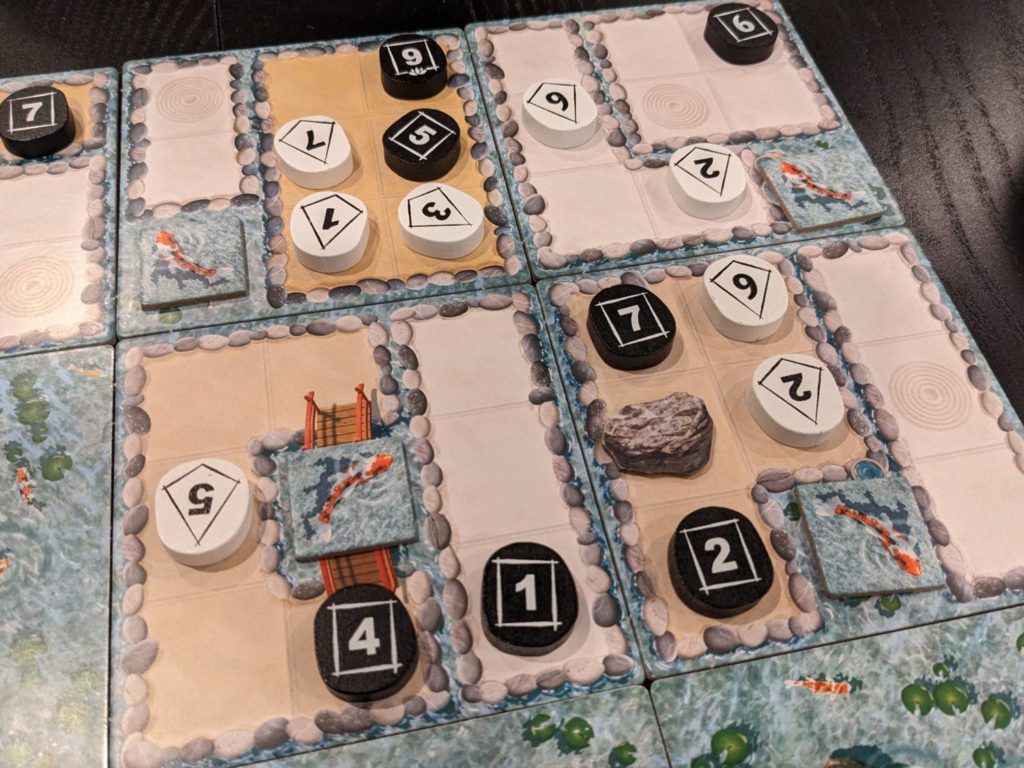
A Pleasant One-Time Diversion
It really is. Hiroba seemed interesting, with a couple of muffled “hmmph” moments in each of my games from another player. The 3×3 grid scales to its player count, so only five of the nine tiles are face-up in a two-player game, while all of them are available in a four-player game. With limited tokens and a crowded board, Hiroba is quick to set up, teach, play, and pile back into a box.
Each play has left me in the same place. Hiroba is fine. It’s not as brain-burny as a Sudoku puzzle should be, so take that as either a compliment or a ding. I was hoping for a bit more depth, but by the time you are warming up, the game will be over!
There are some interesting moments of strategic play, but at no point was I getting ready to lay the hammer on a sweet turn or do something that another player couldn’t see coming. It’s best to win a couple of the larger gardens, but you could also get away with winning nine smaller ones that are not being fought over by the competition. Koi tokens are important, especially when doubling the score of a five- or six-point garden.
Scores have ranged from 20-40 points in my games. Playing last is a decent benefit here, and in each of my plays someone has swooped in to take a tile with their last pebble, with other players unable to combat this move. I don’t know if that’s a flaw or not since everyone can see this coming. Playing first has its own advantages, too, since player order does not change during the game.

One thing that is a flaw: we are too far into the process of making games for tiles with a 6 and a 9 to not use an underline to call out which is which. The 9s in Hiroba have a little flower on the bottom of the pebble, but the 6 has…nothing. In every game of Hiroba, someone forgets this, leading to a moment where they place a pebble thinking they have come in higher (to win a garden) or lower (to win koi) only to realize that they used the wrong token.
COME ON, GAME PUBLISHERS!!! This should never happen any more. My early 1980s version of UNO got this right, so shouldn’t every game have this down by now?
Hiroba as an experience? It’s alright. The game is family-weight and it is mildly interesting. Sudoku lovers may be disappointed, particularly at lower player counts when there are less pebbles on the board that need to be factored into future placements. It’s not a game I would need to play again.


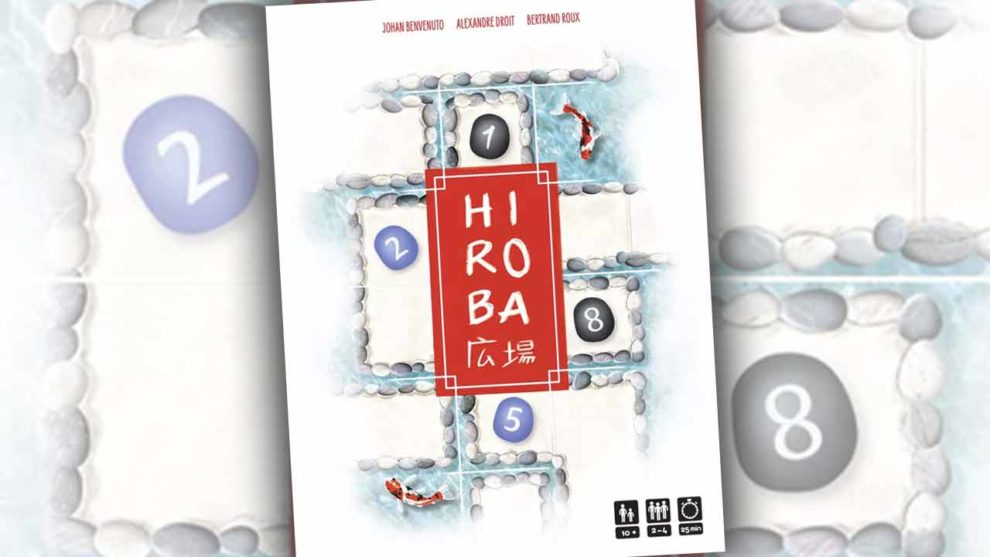

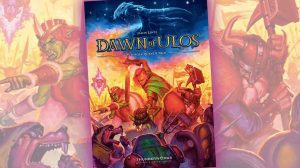
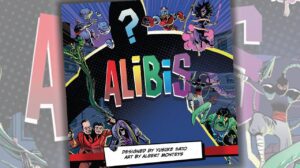
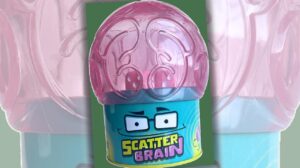




Add Comment